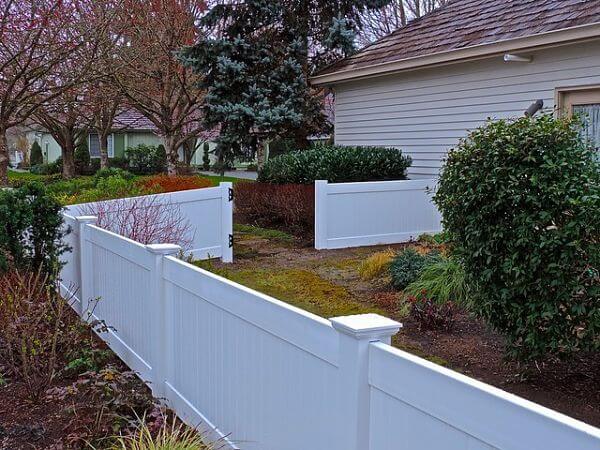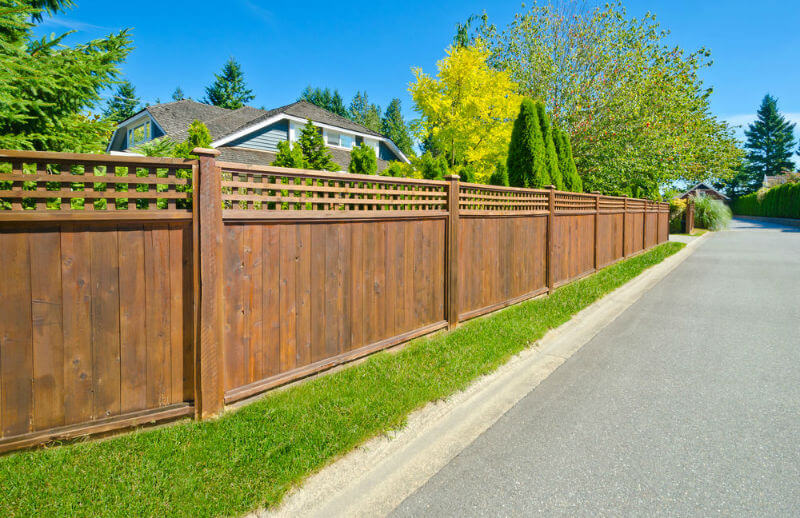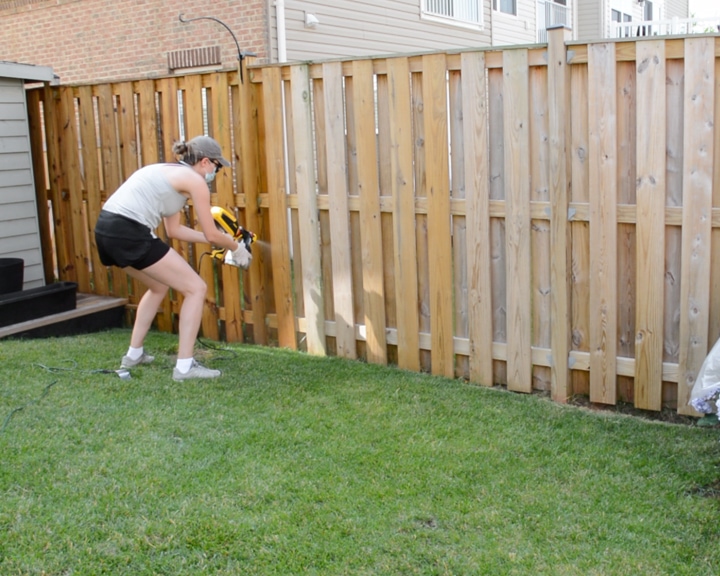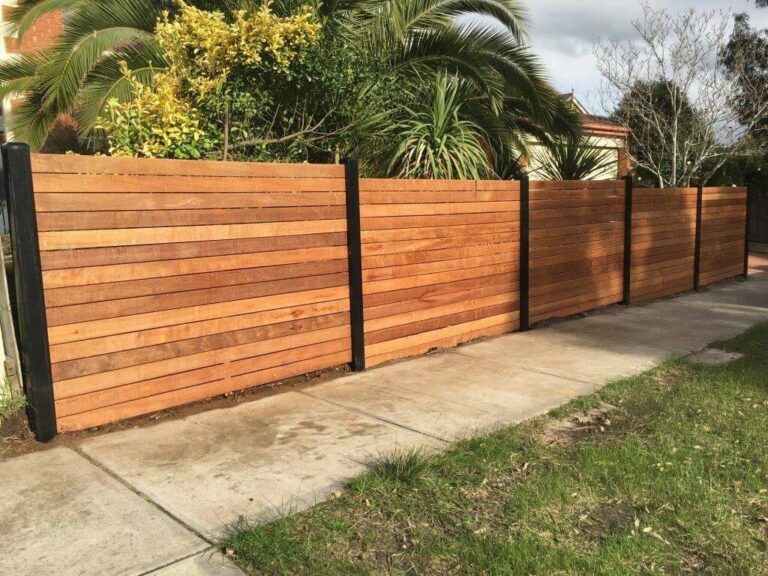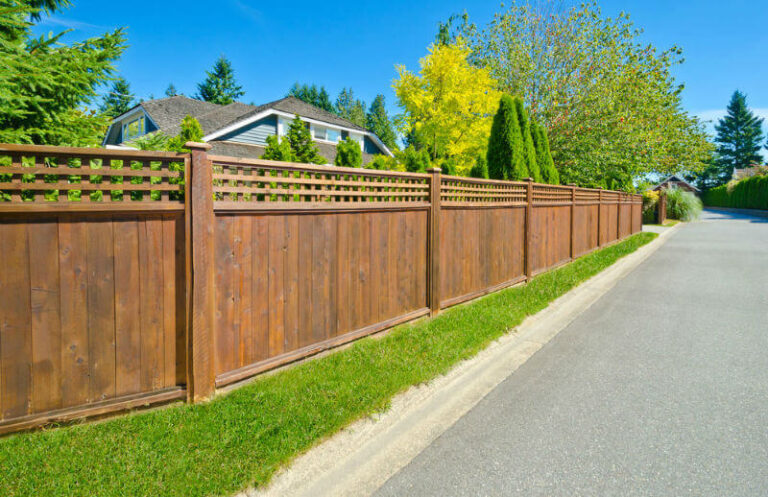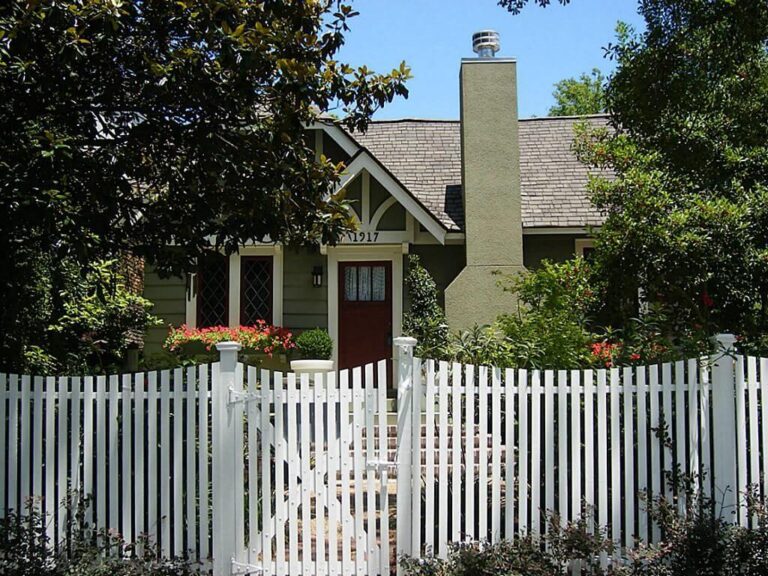Looking for sustainable fencing options? Explore eco-friendly materials like bamboo, reclaimed wood, and metal.
These options offer durability and minimal environmental impact, making them excellent choices for sustainable fencing solutions.
When choosing fencing materials, consider the longevity, maintenance requirements, and eco-friendliness to make an informed decision.
Sustainable fencing not only enhances the aesthetic appeal of your property but also contributes to a greener, more eco-conscious environment.
By embracing sustainable fencing options, you can create a functional and visually appealing barrier while minimizing your carbon footprint.
With the right materials and installation, your sustainable fence can stand the test of time while reducing your environmental impact.

Eco-friendly Material Choices
When it comes to sustainable fencing options, considering eco-friendly material choices is crucial.
Using environmentally friendly fencing materials helps to reduce the carbon footprint and overall environmental impact.
In this discussion, we will explore three eco-friendly options for sustainable fencing: Bamboo fencing, Recycled plastic fencing, and Living fences.
Bamboo Fencing
Bamboo is a rapidly renewable resource known for its strength and durability, making it an excellent eco-friendly fencing option.
With its fast growth rate and minimal need for pesticides or fertilizers, bamboo is a sustainable material.
It offers a natural aesthetic appeal and can enhance the overall eco-friendly atmosphere of a property.
Recycled Plastic Fencing
Recycled plastic fencing provides an innovative solution for sustainable fencing.
Made from post-consumer recycled plastic, this type of fencing not only reduces plastic waste in the environment but also offers long-lasting durability.
It requires minimal maintenance and is resistant to rot, decay, and insect damage, making it a sustainable choice for eco-conscious consumers.
Living Fences
Living fences, also known as green fences or hedgerows, integrate living plant materials such as shrubs, trees, or vines to create a natural barrier.
This sustainable fencing option not only promotes biodiversity but also provides habitat for wildlife.
Living fences offer natural beauty, and air purification, and contribute to carbon sequestration, making them an environmentally friendly alternative to traditional fencing materials.
Energy-efficient Installation Methods
When it comes to sustainable fencing, energy-efficient installation methods play a crucial role in reducing environmental impact.
By incorporating solar-powered solutions and low-impact techniques, you can create a more sustainable fencing system that minimizes energy consumption and environmental footprint.
Solar-powered Fencing
Solar-powered fencing is an innovative solution that harnesses the power of the sun to provide energy for electric fences.
By utilizing photovoltaic panels, these systems can operate independently of the grid, reducing reliance on non-renewable energy sources.
Solar-powered fences are particularly well-suited for remote or off-grid locations, offering a sustainable and cost-effective alternative to traditional electric fences.
Low-impact Installation Techniques
Low-impact installation techniques are essential for minimizing the environmental footprint of fencing projects.
This approach focuses on using sustainable materials, implementing eco-friendly construction practices, and reducing habitat disruption during installation.
By prioritizing low-impact methods, such as post-driving instead of excavation, and utilizing recycled or locally sourced materials, you can significantly reduce the environmental impact of your fencing project.
Long-term Maintenance Strategies
When it comes to sustainable fencing options, having a long-term maintenance strategy in place is crucial for preserving the environmental benefits and longevity of the fence.
By incorporating natural finishes and sealants, as well as implementing integrated pest management techniques, you can ensure that your fence is not only eco-friendly but also well-maintained for the years to come.
Natural Finishes And Sealants
Opting for natural finishes and sealants is an excellent approach to maintaining a sustainable fence.
Natural finishes, such as linseed oil-based products, not only enhance the aesthetics of the fence but also provide a protective barrier against environmental elements.
These finishes are derived from renewable resources and are free from harmful chemicals, making them an eco-conscious choice for long-term maintenance.
Integrated Pest Management For Fence Upkeep
Integrated pest management (IPM) is a proactive method that focuses on preventing and managing pest infestations without the excessive use of harmful pesticides.
Implementing IPM for fence upkeep involves regular inspections to identify and address pest issues before they escalate.
This can include using physical barriers, natural predators, and habitat modifications to deter pests, thereby reducing the need for chemical treatments and minimizing environmental impact.

Frequently Asked Questions
What Is The Most Affordable Fencing Option?
The most affordable fencing option is typically chain-link fencing. It is cost-effective and durable, making it a popular choice for many homeowners.
What Is An Alternative To Fencing?
A viable alternative to fencing is hedging, using plants to create a natural barrier. It offers privacy and security while adding aesthetic appeal to your property.
Another option is to use walls or screens made from materials like wood or metal for a modern touch.
What Is The Least Expensive Property Fencing?
The least expensive property fencing is typically chain link. It’s cost-effective and durable, making it a popular choice for many homeowners.
Conclusion
Exploring sustainable fencing options is crucial for eco-conscious homeowners and businesses.
Choosing materials like bamboo, recycled plastic, or metal supports sustainability and longevity.
By considering factors such as durability, maintenance, and environmental impact, individuals can make informed decisions to create a more eco-friendly and enduring fencing solution.

